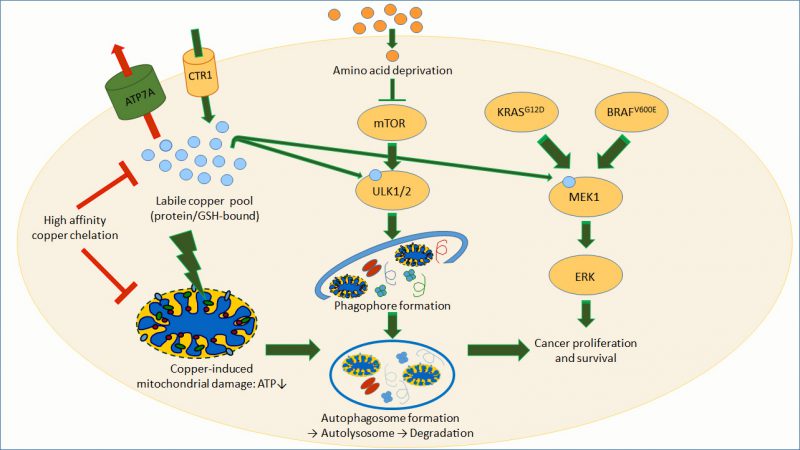Back to article: Copper – a novel stimulator of autophagy
FIGURE 1: Copper-driven autophagy and its impact on Wilson disease and cancer. Cellular copper entry occurs via the transporter CTR1, and its efflux is driven by ATP7A (impaired in Menkes disease, or by ATP7B that is impaired in Wilson disease). High-affinity chelators, CTR1 depletion or ATP7A overexpression reduce the available intracellular copper-pool that otherwise may bind to autophagy activating kinases ULK1 and 2. Upon amino acid deprivation, mTOR kinase activity is reduced, thereby initiating the autophagic process in dependence of ULK1/2. In Wilson disease, excessive copper accumulates in mitochondria, causing bioenergetic deficits, thus providing a further pro-autophagic signal, and copper-burdened mitochondria are subjected to autophagic degradation. In certain types of cancer (e.g. KRASG12D lung adenocarcinomas), copper activates MAPK signaling via MEK1 besides ULK1/2 activation, thereby providing a dual signal that improves cancer cell survival and proliferation.

